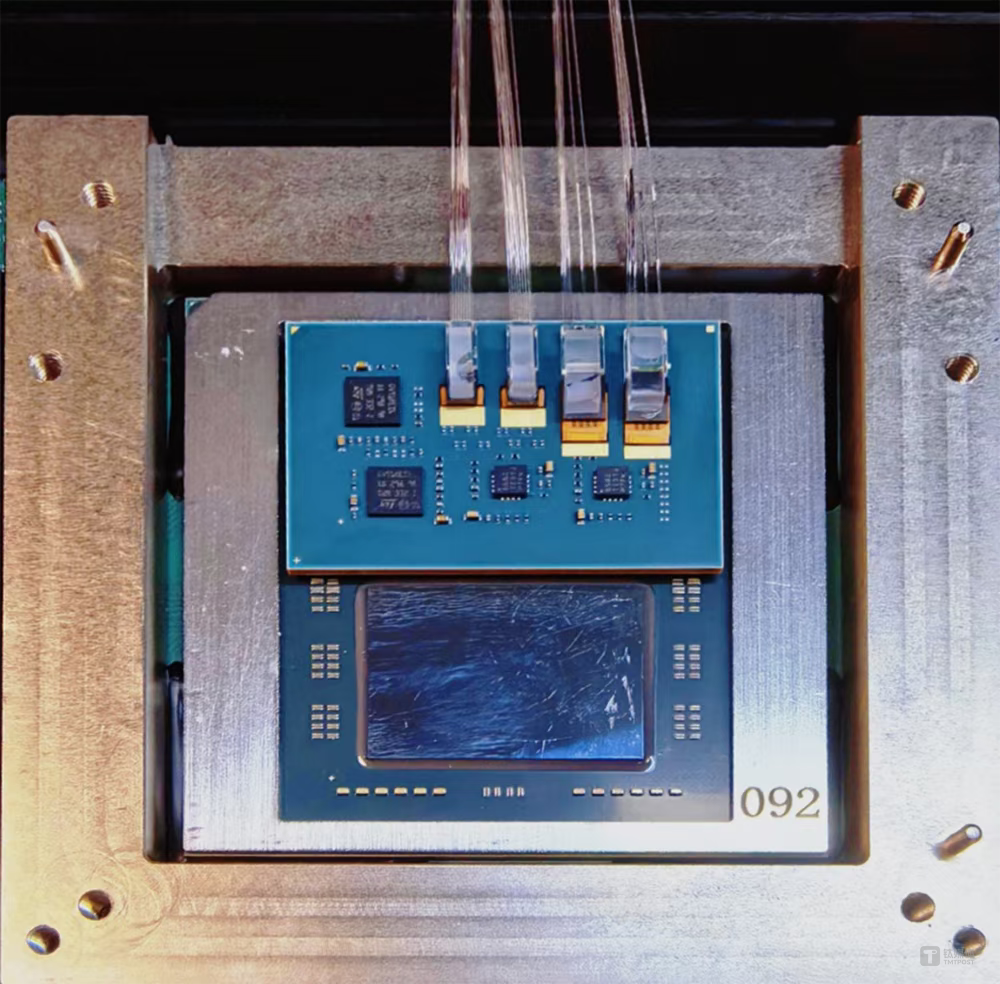TMTPOST -- Lightelligence, a leading global provider of hybrid optoelectronic computing solutions, has closed its Series C funding round, raising more than $210 million.

China’s First xPU-CPO Optoelectronic Co-Packaged Prototype System
The round drew participation from major institutional investors, including China Mobile, Shanghai State-owned Investment, China Reform Securities, and Pudong Venture Capital, alongside existing shareholders CAS Star, Yijing Capital, and a leading internet company, who increased their stakes.
The Shanghai-based company, founded in 2017, has already completed multiple financing rounds, including a $26 million Series A+ round, followed by a successful Series B in 2022. The latest injection of capital is expected to accelerate the development and industrial deployment of Lightelligence’s hybrid optoelectronic computing solutions.

Dr. Shen Yichen, founder and CEO of Lightelligence, noted that large-scale optoelectronic integration technology has reached a critical stage for commercialization. Within the next five years, photonic chips are expected to account for 30% of computing power in intelligent computing centers.
Lightelligence is driving a fundamental transformation of computing infrastructure through disruptive innovation at the foundational level. This funding will help the company accelerate core technology development and large-scale deployment of hybrid optoelectronic computing power, he added.
Headquartered in Shanghai Pudong New Area, Lightelligence employs a team of 50–99 people, supported by more than 200 engineers from over 10 countries. Notably, 70% of its chip designers have over a decade of industry experience, providing the company with a deep technical foundation.
Lightelligence focuses on two primary business lines: photonic networking and photonic computing. In photonic networking, the company leverages advanced optical technologies to provide Scale-Up (vertical expansion) solutions for intelligent computing centers. It has already completed deployment and delivery of multiple clusters containing thousands of optoelectronic cards. At the 2025 World Artificial Intelligence Conference (WAIC), Lightelligence introduced the world’s first distributed optical interconnect GPU supernode, LightSphere X, alongside China’s first xPU-CPO optoelectronic co-packaged prototype system. The company is also actively developing CPO solutions with higher integration and greater bandwidth density.
On the photonic computing front, Lightelligence is advancing commercial applications and ecosystem development. Co-founder and Chief Technology Officer Dr. Meng Huaiyu highlighted the advantages of optical computing, explaining that “based on the optical Fourier transform, our optical computing solutions achieve sub-nanosecond latency with virtually zero power consumption, making them ideal for highly parallel tasks such as matrix operations. Additionally, optical computing chips do not require advanced manufacturing processes; 45nm/65nm technology is sufficient, offering a practical path for domestic production.”
Lightelligence recently released its latest generation optoelectronic hybrid computing card, Xizhi Tianshu, which integrates the world’s largest 128×128 photonic matrix. This innovation enables the application of hybrid optoelectronic computing to complex commercial models for the first time. Earlier this year, the company published its optoelectronic hybrid computing architecture in the journal Nature, revealing technical details to attract partners and promote industrial adoption. The company is now developing its next-generation computing card, which will fully support large AI models.
The broader industry context also highlights the strategic importance of Lightelligence’s technology. As the world enters the era of “Photonics Economy 3.0,” photons are no longer just energy carriers but key information mediums. The integration of optical computing and interconnects is poised to reshape the global industrial landscape over the next decade, creating both technological and strategic opportunities for countries like China seeking industrial autonomy.
Dr. Shen concluded, “We remain committed to pushing the boundaries of computing power through optoelectronic integration. Our goal is to transform the way intelligent computing centers operate and to accelerate the adoption of photonic technologies across key industries, including big data, cloud computing, finance, autonomous driving, biomedicine, and materials research.”
更多精彩内容,关注钛媒体微信号(ID:taimeiti),或者下载钛媒体App

